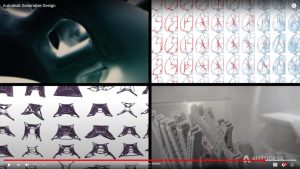Pursuit of Realism
Uncanny valley is the obstacle that CGI artists have to break through. Mashiro Mori introduced that as a humanoid robot’s representation approaches a great closeness to human form, it induces negative responses. Only past a certain degree of human likeness and familiarity, then a robotic form will induce positive responses. It means that on this scale of human likeness, there is a section before peak familiarity, that human CGI will look creepy and unfamiliar.
In the pursuit to make CGI or graphics in movies realistic, there will come a point where it reaches the uncanny valley. It sort of becomes an obstacle as they near the start of the uncanny valley, the graphics are well received by the viewers. However, in the uncanny valley, the more the artist improves on the realism of the graphics, the more audiences will feel unfamiliarity and not respond well to it. One of the most prominent examples is the film Final Fantasy: The Spirits within. The film featured more CGI animation than had ever been attempted in 2013. The main character was composed of over 400,000 rendered polygons and 60,000 fully rendered and animated hairs. Despite this meticulous attention to detail, the film failed. It’s failure is mainly attributed to the uncanny valley which was a major source of criticism from film goers.
Film/game makers strive to create something visually appealing, which following the uncanny valley graph, they strive for it to be at the peaks before or after. Designing such characters require a lot of details. Take a FIFA game for example. When a player scores a goal, the emotions it needs to portray needs to be shown in the facial expressions, the winning pose, angle of how the body bends, even the voice tone of the in-game commentators. It takes a lot of resources, money and advanced technology to get out of the uncanny valley. Each of it must be spot on to make it seamlessly human-like. If just a few of those details are missing or off, a viewer straight away sees the unhuman-like it is, and it just tumbles back down into the valley.
This brought me to think, is it actually worth it trying to reach the peak after the uncanny valley? Human-like visuals may seem familiar and allow for more realistic looking games/films that may not have a realistic story. However, it also limits aesthetic variety. Human-like characters will have to have human-like actions and expressions. Pre-uncanny valley peak visuals however, are more cartoonish and are able to act unrealistically and have exaggerated reactions. It allows creators to go for any kind style. Retro, illustrations, painterly style etc.

